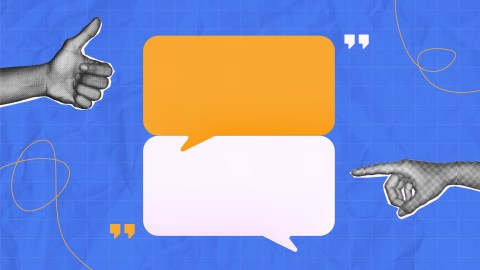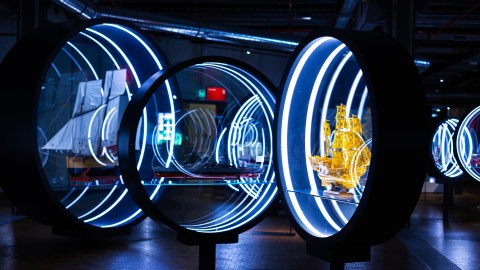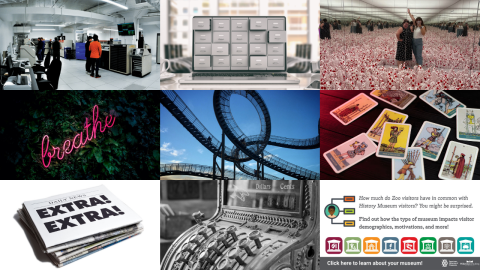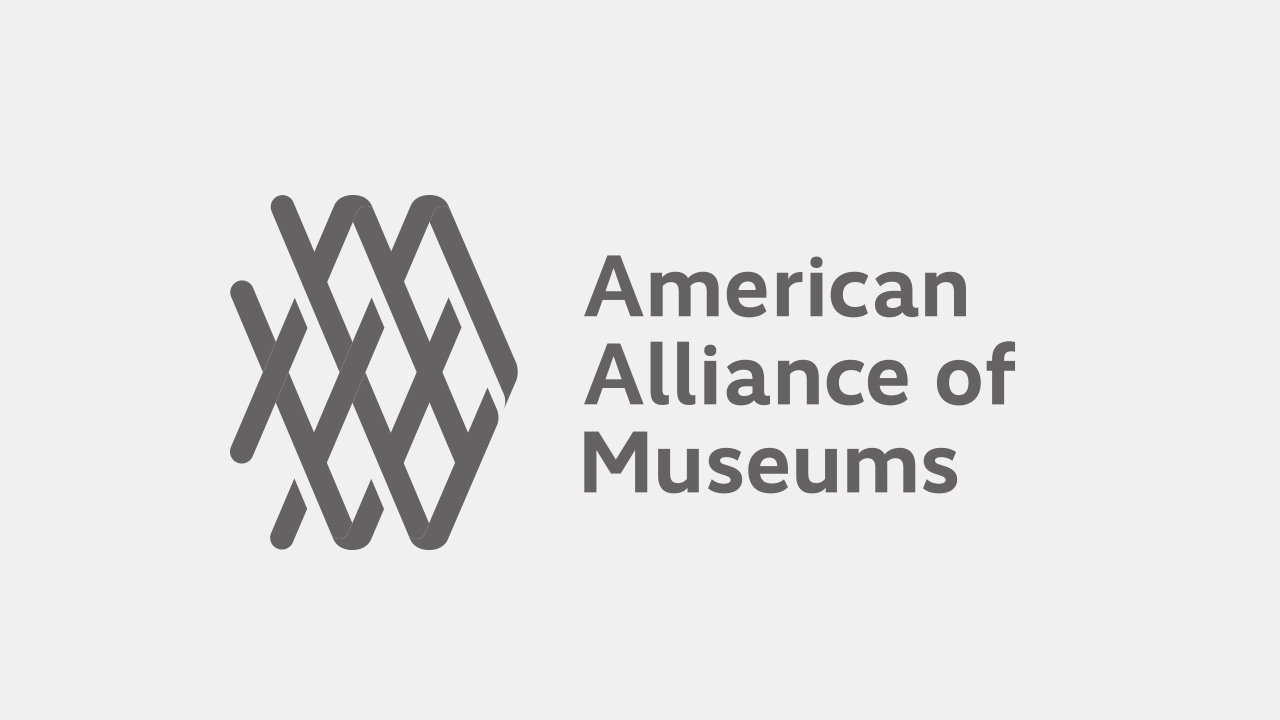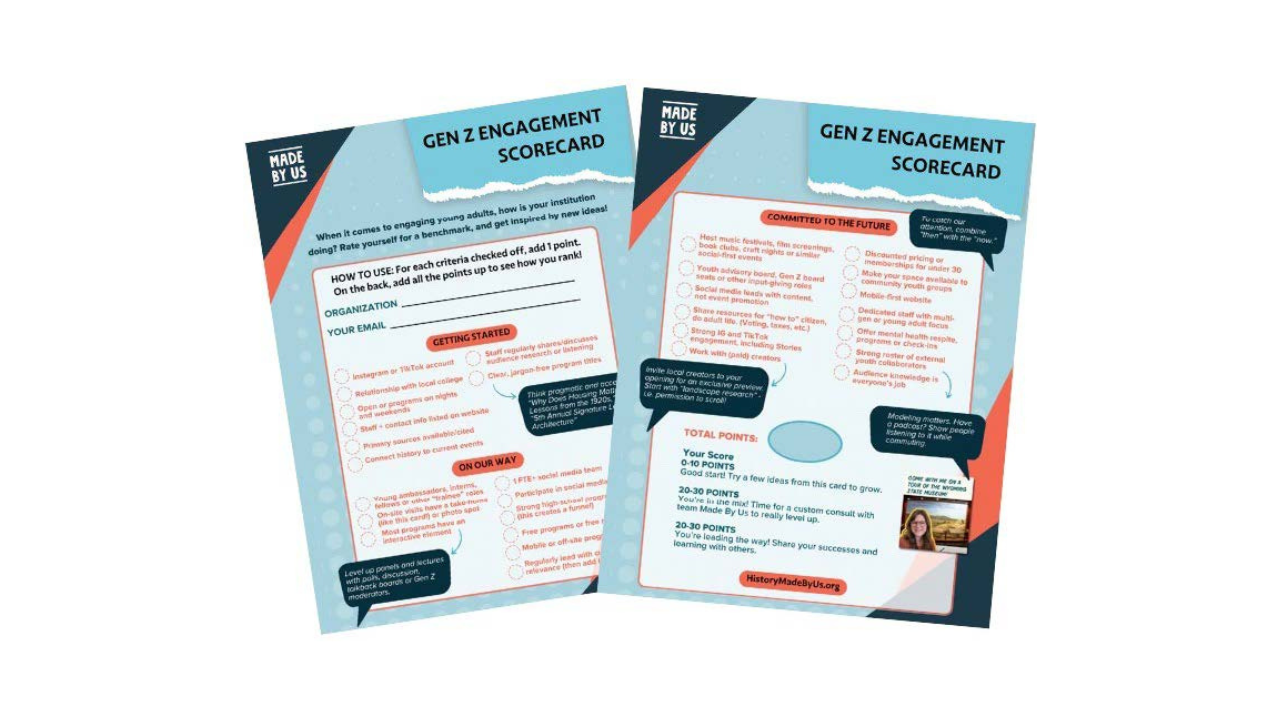
The United States is experiencing its most age-diverse society ever, as lifespans get longer and a tidal wave of young people prepare to enter adulthood. As a result, museums are facing greater demands to serve multiple generations and life stages at once.
Frequently associated with children or retirees, museums are also uniquely positioned to meet the needs of young adults—people who are taking up the mantle of adult citizenship, making decisions about careers and education, seeking to clarify their beliefs and values, and looking for local hubs of information and social connection. Today, this group is better known as Generation Z, individuals born between 1997 and 2012.
Museums seeking to engage with young adults ages 18 to 30 and introduce them to the incredible resources they offer can look to a robust set of tools provided by Made By Us. Launched by a coalition of museum directors in 2018, the Made By Us network currently has four hundred participating partners, and its tools range from monthly skill-building Power Hour sessions to a Social Media Think Tank to the Youth250 Toolkit.
As the saying goes, “what gets measured gets done.” Based on surveys of the Made By Us partners, museums see an average 25 percent increase in young adult engagement after they join the network—a great outcome. However, we also wanted to understand the input, i.e., the ways in which museums had invested in young adult services so far, specifically:
- What do young people want to see from museums?
- What investments have museums made to address this audience?
- Which internal and external practices have museums adopted or not adopted?
- Can we establish a baseline for the field right now that can also help us measure progress in the future?
A New Tool Co-Created with Young People

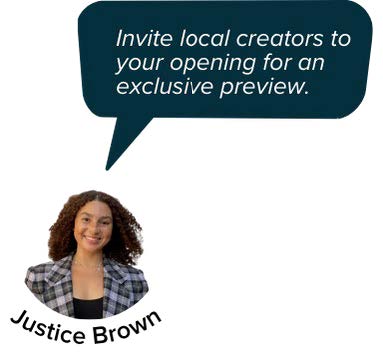
We worked with a dozen young adults in the Made By Us community, including DaShawn Rustin and Justice Brown pictured above, to develop and refine a Gen Z Engagement Scorecard. We then vetted the measures they came up with against our research from the last few years. For example, they confirmed that it’s important to list staff and contact information on your website. This is because young people prefer transparency and are also savvy about seeking out credentials, funders, and sources to assess whether information is reliable or represents a certain viewpoint.
The Gen Z Engagement Scorecard includes thirty measures, categorized by three levels of difficulty, that capture where museums have leaned in the most. Most of the measures are quite tactical, such as having “a strong roster of youth collaborators” or “jargon-free program titles.” However, a museum’s ultimate score isn’t just based on Instagram likes; rather, it reflects the institution’s understanding of the connections, investments, and strategies needed to captivate young adults.
How Are Cultural Institutions Serving Gen Z?
Two hundred and five museums have completed the Scorecard so far; here are their results.
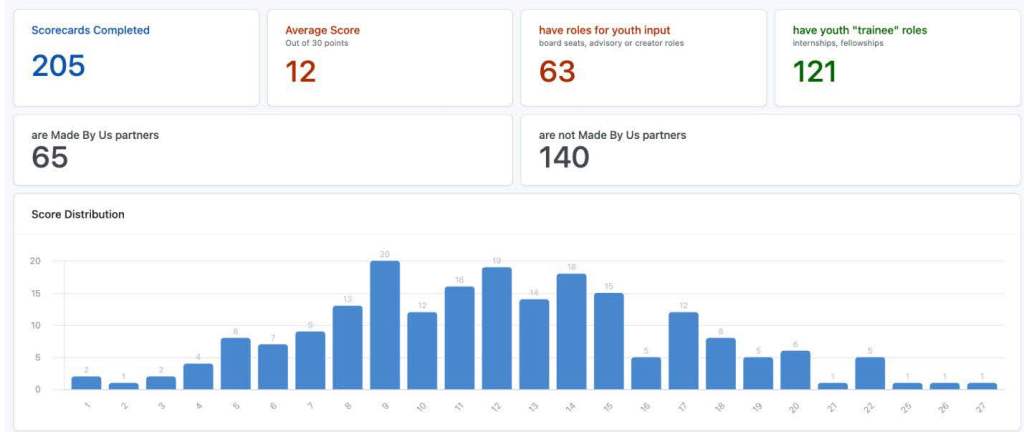
Some quick statistics:
- Of the 205 institutions that have completed the Scorecard, most (68 percent) are not Made By Us partners. Thus, the data represents a wider cross-section of museums than just those already committed to youth engagement.
- The average score was 12 out of 30 points.
More than half of the 205 museums have invested in:
- An Instagram or TikTok account (87 percent)
- Programming on nights or weekends (74 percent)
- Free programs or free nights (70 percent)
- Including staff names and contact information on the website (65 percent)
- A relationship with a local college (62 percent)
- Interns, young ambassadors, or other trainee roles (59 percent)
- Social media posts with collection-focused content rather than promotional messages (55 percent)
As reported by these museums, the top constraints affecting youth engagement are:
- Staff capacity
- Lack of knowledge about how to proceed
- Lack of ideas or models to replicate
Recognizing these concerns led Made By Us to develop the Youth250 Toolkit, which has data on what young people want and the tools to deliver it using limited resources. The tools include plug-and-play program templates, adaptable quizzes and prompts, and tip sheets for working across generations. We will continue to add new tools through 2026, including resources on teens, and to build a library of successful case studies based on Scorecard responses.
Speaking to Youth Versus Listening to Youth
The most interesting finding for our work has been the identification of a gap between institutions with “youth trainee roles” and those with “youth input roles.” Examples of youth trainee roles include traditional internships or apprenticeships, an arrangement where young people are learning from an experienced expert or senior staffer. Such roles are important for individual career development and help the museum field at large develop the next generation of talent.
However, trainee roles are nowhere near as impactful—for both young person and institution—as youth input roles. This term refers to opportunities where young people’s ideas, perspectives, and voices can be heard and considered, for example as members of an advisory board or review committee or as content creators, opinion writers, panelists, interviewees, or podcast hosts.
Fifty-nine percent of organizations that completed the scorecard have youth trainee roles. Yet only 30 percent have youth input roles. This points to an area for growth, especially now when many museums’ resources are constrained. Museums can tap into youth energy, passion, ideas, and creativity to fill the gaps in services, better direct our limited resources to be the most effective, and prepare our systems and structures for the future. The vantage point of youth is valuable; that’s why brands drop billions of dollars to attract young consumers and why younger people are so often on the tip of the spear of technology, social change, and cultural trends. They are the closest to the future. Museums can harness that power.
Museums must “flip the script” from thinking about young people as minds to be molded and students to be taught to seeing them as people who can teach us about their world and what the future might hold. Consider including a younger person on your next exhibit advisory committee or inviting local students to give feedback on your exhibition plan. Include a student panel at your next event, and build a habit of checking whether any young people are in the room when decisions are made. Ask young people which topics they’d like to learn about, how they like to spend their free time, where they get their news. Use the Scorecard to get new ideas and track your progress.
We invite you to get your score, share your data with other museums, discuss the results with your colleagues and stakeholders, and provide us with feedback and ideas. Follow the progress on our results dashboard. The future starts now, museums!




